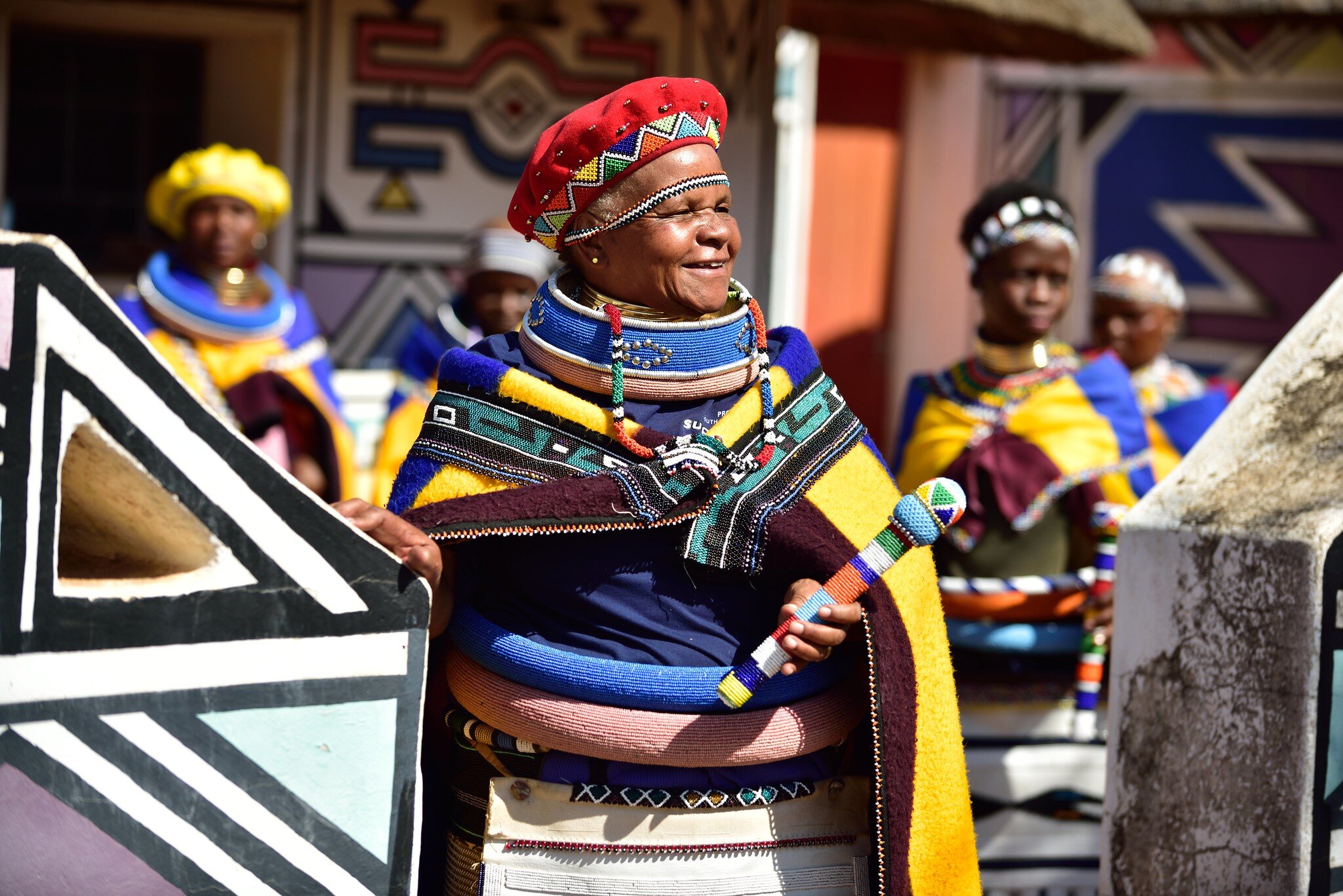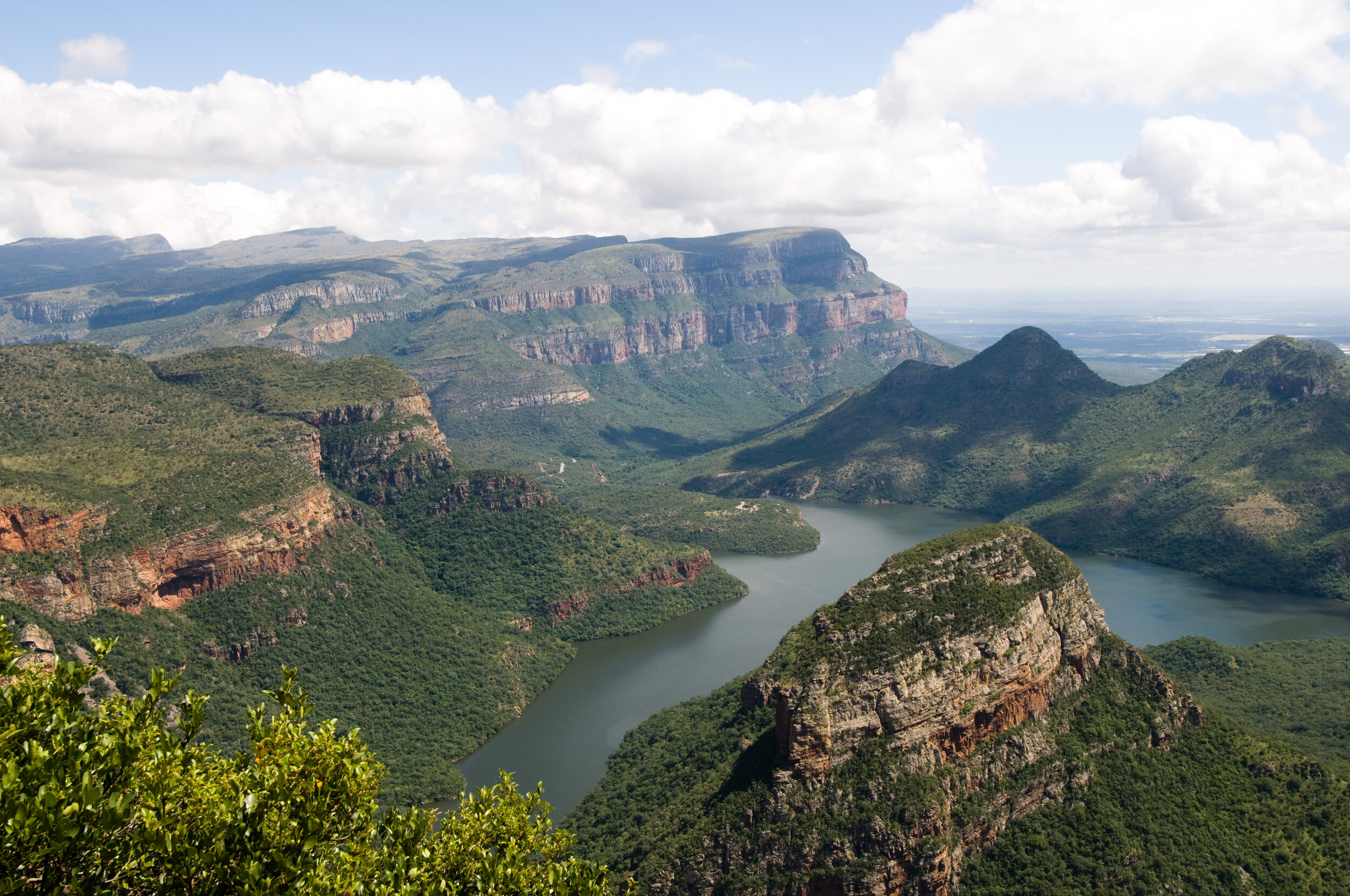South Africa
Travel and Tourism Information
Cape Town, looking south from Sea Point towards Camps Bay (Photo: Christopher Griner)
Introduction
Breathtakingly beautiful, culturally diverse and easier on the wallet than you might expect, South Africa has to be seen to be believed.
South Africa occupies the southern-most tip of Africa. Its long coastline stretches more than 3,000 km from the desert border with Namibia on the Atlantic coast southwards around the tip of Africa and then north to the border of subtropical Mozambique on the Indian Ocean.
The country has more than 290 conservation parks. It is home to almost 300 mammal species, about 860 bird species and 8,000 plant species. The annual sardine run is the biggest migration on the planet.
South Africa comprises eight world heritage sites and is divided into eight biomes.
Map and Geography
South Africa’s surface area covers 1,219,602 square kilometres. Physical features range from bushveld, grasslands, forests, deserts and majestic mountain peaks, to beautiful, pristine beaches and coastal wetlands.
The country shares common boarders with Namibia, Botswana, Zimbabwe, Mozambique, Eswatini and Lesotho.
South Africa has three capital cities: Pretoria (the executive), Bloemfontein (the judicial) and and Cape Town (the legislative). The largest city is Johannesburg.
Elephants in Kruger National Park (Photo: Flowcomm)
Climate and Temperature
South Africa is a relatively dry country, with an average annual rainfall of about 464 mm. While the Western Cape gets most of the country’s rainfall in winter, the rest of the country generally receives its rainfall during the summer months.
On the interior plateau the altitude keeps the average summer temperatures below 30°C. In winter, for the same reason, night-time temperatures can drop to freezing point or lower in some places. South Africa’s coastal regions are therefore relatively warm in winter. There is a striking contrast between temperatures on the country’s east and west coasts, owing respectively to the warm Agulhas Current and cold Benguela Current that sweep the coastlines.
Johannesburg: In summer, average temperatures are highs of 26°C and lows of 15°C, and in winter, highs of 17°C and lows of 2°C
Durban: In summer, average temperatures are highs of 29°C and lows of 21°C, and in winter, highs of 24°C and lows of 11°C
Cape Town: In summer, average temperatures are highs of 29°C and lows of 17°C, and in winter, highs of 20°C and lows of 11°C
Ndebele village in Mpumalanga (Photo: South Africa Tourism)
Population and Language
South Africa has a population of 55.4 million people and is called the rainbow nation due to its variety of people, cultures and religions.
The country has 11 official languages, and many more unofficial ones. The official languages of South Africa include Afrikaans, English, isiNdebele, isiXhosa, isiZulu, Northern Sotho, Sesotho, Setswana, siSwati, Tshivenda, Xitsonga.
Religion
The majority of South Africans are Christians. The largest established Christian denominations are directly rooted in European settlement but now draw members from all ethnic groups. These are the Methodist, Roman Catholic, Anglican, and Dutch Reformed churches.
There is a sizable minority that adheres to traditional beliefs.
Other religions found in South Africa are Hinduism, among the majority of Indians; Islam, among many Indians and Malays; and Judaism, among a minority of the white population.
Pata Pata restaurant in Johannesburg’s bustling Maboneng district (Photo: South African Tourism)
Traditional Food and Drink of South Africa
The cuisine of South Africa reflects the various cultural influences that have existed in the country since colonial times. The influence of Dutch, Malay, British, German, Indian and Portuguese people, as well as local indigenous tribes can be experienced in dishes from around the country.
Biltong is dried, seasoned meat. The meat used is most commonly beef, but you can get springbok, kudu, eland, chicken and ostrich biltong.
Bobotie is a dish of Malay descent. It is made with meatloaf with raisins with baked egg on top, and is often served with yellow rice, sambals, coconut, banana slices, and chutney.
Boerewors is a flavourful sausage.
Bunny Chow is a hollowed-out loaf of bread stuffed with curry. It is often called Kota and is sometimes filled with French fries, polony, cheese, and atchaar (south Asian pickle) and other fillings and spices.
Chakalaka is a spicy South African vegetable relish typically made with bakes beans, carrots, peppers and curry.
Dombolo is dumplings, usually steamed in a pot.
Mielie-meal is a staple food, often eaten as the base of most traditional meals. It is often called Pap.
Vetkoek / Fat Cakes / Magwinya are deep fried dough balls, typically stuffed with meat or served with snoek fish or jam.
Rusks are rectangular, hard, dry biscuits eaten with tea or coffee.
Melktert is a milk-based tart or dessert.
Malva Pudding is a sweet spongy apricot pudding of Dutch origin.
Koeksisters are twisted pastries, deep fried and heavily sweetened.
Umqombothi is traditional beer made from fermented sorghum or millet.
Rooibos is a caffeine free herbal tea indigenous to South Africa and known for its health benefits.
Boeber is a traditional Cape Malay sweet milk drink, made with vermicelli, sago, sugar, and flavoured with cardamom, cinnamon and rose water.
Mageu is a drink made from fermented ground maize.
Nelson Mandela House museum in Soweto (Photo: Michael Denne)
Passport and Visa Requirements
Most Western nationals do not need a visa to enter South Africa for visits of up to 90 days. For a full list of visa rules and requirements, check the official government website.
Your passport should be valid for a minimum period of 30 days from your intended date of departure from South Africa. Passports must have at least two blank pages for entry stamps.
Yellow fever certificates are required if your journey starts from, or passes through, a country with yellow fever.
Ostriches in Namaqualand (Photo: Flowcomm)
Currency
The official currency is the South African Rand and is denoted with an R (code: ZAR).
1 Rand is made up of 100 cents.
Notes come in denominations of R10, R20, R50, R100 and R200, and coins are in denominations of 10c, 20c, 50c as well as R1, R2 and R5.
Notes and coins are used throughout the country and are the accepted form of payment.
Major international cards such as Visa and MasterCard are accepted throughout South Africa. American Express and Diners Club may not always be accepted.
ATMs are widespread in larger towns and cities.
Sun City Golf Course (Photo: South African Tourism)
Electricity
Power plugs and sockets in South Africa are of type D, M and N. The standard voltage is 230 V and the standard frequency is 50 Hz.
International Dialing Code
The international dialing code in South Africa is +27
Telecommunications
Telecommunications infrastructure in South Africa provides modern and efficient service to urban areas, including cellular and internet services. A number of network providers offer national coverage, along side well established landline phone networks. Internet and wifi are easily and widely accessible in most urban areas at hotels, restaurants, shopping centres and public places.
Zulu men (Photo: South African Tourism)
Transportation
South Africa has three major international airports. These are O.R Tambo International Airport in Johannesburg, King Shaka International Airport in Durban and Cape Town International Airport.
The country’s network of roads and railways is the most extensive in Africa and handles most of the transportation demand, supplemented by air travel which connects to all major cities in South Africa.
Most towns are connected by two-lane highways. Multi-lane freeway systems extend around the four major urban areas.
The railway system serves all the major cities, most smaller towns, and many rural areas.
The luxurious steam-operated Blue Train which runs the 1,600 km (1,000 miles) between Pretoria, Johannesburg, and Cape Town is a popular tourist attraction.
Time
The time zone in South Africa is GMT+2, or Central African Time.
Southern carmine bee-eaters (Photo: Derek Keats)
Health
Healthcare is generally good in big towns and major cities, but can be quite limited in rural areas. There is a large difference is service quality at public versus private hospitals.
Before traveling to South Africa, you should consult your doctor and ensure that your routine vaccines are up to date. Diphtheria and Hepatitis A vaccinations are usually advised, along with Hepatitis B, Rabies, Tetanus and Typhoid vaccinations.
Anti-malaria prophylactics may be necessary depending on where and when you plan to travel.
Malaria risk is present throughout the year, but highest from September to May inclusive. Risk is high in low altitude areas of Mpumalanga Province (including Kruger National Park) and Limpopo Province, Vhembe and Mopani districts, Musina, Thohoyandou and surrounds. There is low to no risk areas in all other areas.
Be mindful to protect yourself against sunstroke, snake bites, tick-bite fever, Sleeping Sickness and Bilharzia (Schistosomiasis).
Bongani Lodge (Photo: Heribert Bechen)
Safety
In general, South Africa has a high level of crime. That said, the risk of violent crime to visitors travelling to the main tourist destinations is generally low. The South African authorities prioritise protecting tourists and tourism police are deployed in several towns and cities. The most violent crimes tend to occur in townships on the outskirts of major cities and isolated areas.
If you are visiting the CBD of any major city, remain alert at all times, do not leave valuables on show, and take safe and reliable transport to and from your destination.
If you are hiking in National Parks, try to hike in groups and stick to popular trails on popular days such as weekends. Take care in quieter areas of the Park, especially early in the morning or just before the park closes.
In Game Reserves be alert to unpredictable behaviour by wild animals. Follow park regulations and wardens’ advice. Avoid bathing in rivers and lakes, because of the dangers from both wildlife and water-borne diseases. Check boots and shoes for insects such as scorpions before putting them on – especially if camping.
If you travel to remote areas, plan your trip carefully, make transport and accommodation arrangements in advance and seek local security advice. Take emergency supplies (including water and fuel) and be prepared for off-road driving conditions. In very remote areas, travel in convoy or with a satellite phone in case of breakdown.
You should carry some form of identification with you at all times. A photocopy of your passport is sufficient.
LGBTQI+ Travellers
South Africa is a fairly accepting country for most tourists and it has some particularly gay-friendly areas to visit and enjoy. It has enshrined equal treatment of the LGBTQ+ community in law and recognises same-sex marriage. That said, feelings towards sexuality can vary widely amongst the population.
Always check your government's latest travel advice before you visit.
Victoria and Alfred (V&A) Waterfront in Cape Town (Photo: Thomas)
When is the best time to visit South Africa?
South Africa offers plenty of things to do throughout the year.
Game viewing in the national parks is best in the dry winter months, from June to September. Winter is also the best time for whale watching. If you are a surfer, big swells roll in along the coast during this time of year.
Sightseeing in the cities and along the coast is wonderful all year-round, though winters can be a little chilly - especially in the south of the country.
If you plan to explore Cape Town and the Garden Route, spring and summer (September through to February) is the best time to go. This is also the best time to soak up the sun on South Africa's beautiful beaches.
Blyde River Canyon (Photo: Chris Eason)
Key Attractions
Table Mountain
Table Mountain, which forms part of the Table Mountain National Park, is one of the official New Seven Wonders of Nature. A modern cableway takes visitors to the top of the mountain, providing spectacular views. On Table Mountain's eastern slopes, the magnificent Kirstenbosch Botanical Gardens lie within the UNESCO World Heritage Site.
Namaqualand
Namaqualand is famous for a spectacular annual show in spring when an abundance of wild flowers covers vast tracts of desert.
Kruger National Park
The Kruger National Park is one of South Africa’s major tourist attractions – as well as one of the best game reserves in Africa, and one of the oldest in South Africa. The park is home to a large number and wide variety of amphibians, reptiles and birds, as well as 147 mammal species, including the Big Five.
Mapungubwe Archaeological Site
The Mapungubwe Archaeological Site, 80 km west of Musina, lies within the boundaries of the Mapungubwe National Park. It is a UNESCO World Heritage Site and one of the richest of its kind. Excavations in the 1930s uncovered a royal graveyard, which included a number of golden artefacts, including the famous gold foil rhinoceros.
Blyde River Canyon
The spectacular Blyde River Canyon is a 26 km long gorge carved out of the face of the escarpment, and is one of the natural wonders of Africa. God’s Window provides a magnificent panoramic view across kilometres of densely forested mountains, the green Lowveld and the canyon. The park is home to Africa's second largest canyon, as well as a rich diversity of wildlife and plants. Lush subtropical foliage, waterfalls, glistening rivers, and lichen-covered rock formations create a striking canvas of color and texture.
The Garden Route
Along the country's southeast coast, the Garden Route runs for about 200 kilometers through some of South Africa's most breathtaking coastal scenery. The route stretches along the Indian Ocean from Mossel Bay, in the Western Cape, to the Storms River, in the Eastern Cape. Highlights of the Garden Route include the charming town of Knysna, snuggled between dense forests and a sparkling lagoon; the beautiful Garden Route National Park, with its gorges, tidal pools, and thick forests; Oudtshoorn's ostrich farms and Cango Caves; and the seal colony of the Robberg Nature Reserve in Plettenberg Bay.
Chocolate and wine pairing at Lanzerac Wine Estate in Stellenbosch (Photo: Rod)














